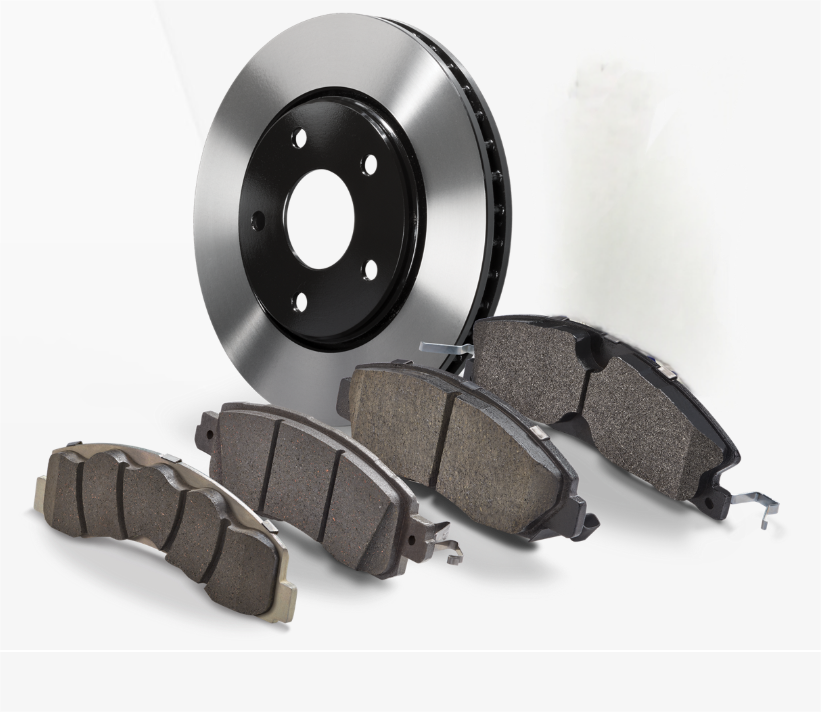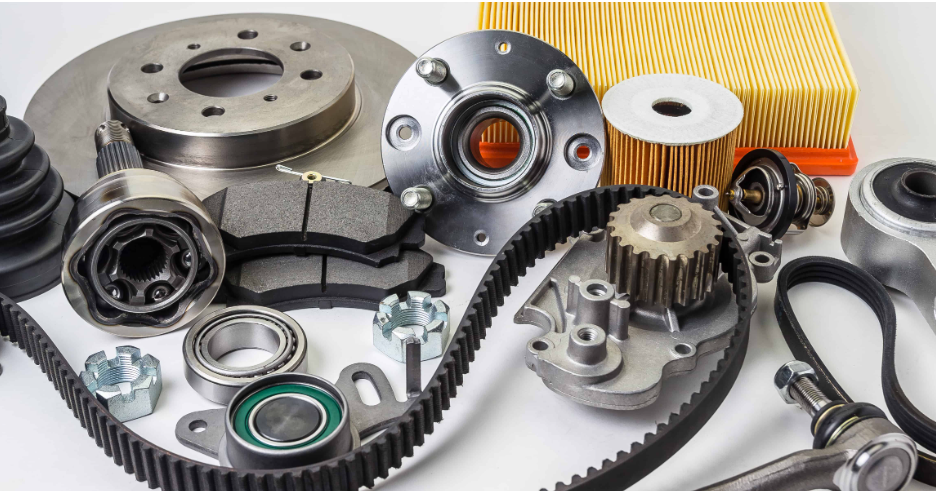Essential Automotive AC Hose Maintenance Practices
Regular Cleaning to Prevent Contamination
Keeping your automotive AC hose clean is critical for ensuring optimal performance and longevity of your vehicle's cooling system. A dirty hose can become a conduit for dirt and debris, which can severely reduce the efficiency of the system and even cause damage. Over time, contaminants can build up, leading to restricted airflow and pressure imbalances that compromise the entire AC performance. According to recent statistics, vehicles with well-maintained and clean AC hoses can achieve up to a 15% increase in cooling efficiency compared to those with neglected hoses.
To effectively clean your AC hose, follow these steps:
- Gather Supplies: You will need a mild degreaser, soft brush, and a clean cloth.
- Disconnect the AC Hose: Ensure the engine is off, then carefully disconnect the hose.
- Clean the Hose: Apply the degreaser and use the brush to gently scrub away dirt and grime.
- Rinse and Dry: Rinse with water and dry thoroughly with the cloth before reconnecting.
By adhering to regular cleaning practices, you mitigate the risk of dirt-related damage and enhance the system's ability to function efficiently.
Avoiding Heat Exposure and Physical Stress
High temperatures can be detrimental to AC hoses, causing materials to degrade and leading to premature failure. Heat exposure can make hoses brittle, cracking, or bursting under pressure. To prevent this, it is crucial to position your AC hoses away from engine components that emit high levels of heat. Use heat shields if necessary to protect them from thermal stress.
According to experts, maintaining a temperature below the recommended threshold extends the lifespan of automotive AC hoses significantly. It's important to ensure proper installation and routing, which can minimize thermal stress exposure. Studies indicate that hoses installed correctly, with adequate spacing from heat-generating parts, are up to 30% less likely to suffer from heat-related failures.
Implementing these practices not only preserves the condition of your hoses but also ensures the entire AC system operates efficiently.
Proper Refrigerant Level Management
Maintaining the correct refrigerant levels is paramount to ensuring your vehicle's AC system operates effectively. If the refrigerant level is too high or too low, the integrity of the hose can be compromised, leading to decreased performance or even system failure. Standards set by the HVAC industry emphasize the importance of regular checks to manage these levels.
To check and maintain refrigerant levels:
- Use a Pressure Gauge: Attach the gauge to the vehicle’s refrigerant service port to measure current levels.
- Compare with Recommended Levels: Refer to your vehicle's manual for specified refrigerant pressure ranges.
- Adjust as Necessary: If levels are too low, recharge the system with the appropriate refrigerant.
By consistently monitoring and adjusting the refrigerant levels, you ensure the hoses are not subject to undue stress and help maintain their structural integrity. This vigilance reduces the risk of leaks and bursts, promoting long-term efficiency and reliability of the air conditioning system.
How to Inspect Your AC Hose Effectively
Visual Checks for Cracks and Corrosion
Regular visual inspections of your automotive AC hose are essential to identify early signs of wear and tear, such as cracks and corrosion. By conducting these inspections consistently, you can catch potential issues before they escalate into costly repairs. To perform a comprehensive visual check, begin by cleaning the hose to remove dirt that might obscure your view. Focus on areas prone to damage, like bends or connections. According to industry experts, proactive inspections can dramatically reduce the probability of system failures, saving significant time and money in the long run.
Pressure Testing for Leak Detection
Pressure testing is a reliable method to detect leaks in your AC hose. This procedure involves evaluating the hose's ability to maintain pressure without any loss, indicating a leak-free system. Consistent pressure is crucial, as fluctuations can signal leakages. Referencing automotive guidelines, the acceptable pressure range will ensure optimal testing. Utilize tools like a pressure gauge and soap water solution to identify even the smallest leaks. These signs of leakage can undermine system efficiency, so addressing them promptly is vital.
Checking Hose Flexibility and Connector Integrity
Assessing the flexibility of your AC hose is crucial for determining its health and performance levels. A lack of flexibility could indicate material degradation, which can compromise system functionality. Inspecting the connectors is equally important, as worn or improperly fitted connectors can disrupt performance and contribute to leaks. Under typical driving conditions, AC hoses generally last between 8 to 10 years, but regular checks of hose flexibility and connector integrity can extend their lifespan, ensuring reliability and efficiency in your vehicle's air conditioning system.
Optimal Replacement Frequency for AC Hoses
Signs You Need Immediate Replacement
Recognizing the signs that indicate an AC hose needs immediate replacement can prevent larger issues down the line. Critical symptoms include reduced cooling efficiency and visible damage such as cracks or leaks. For instance, if you observe that your car's air conditioning isn't cooling effectively, it may be due to a compromised AC hose that cannot maintain pressure. Automotive experts recommend acting promptly to replace any hoses displaying these signs, to prevent costly repairs or even system failure. Ensuring that these components are in optimal condition is integral to maintaining your vehicle's cooling system and overall performance.
Average Lifespan Expectations
Automotive AC hoses generally have a lifespan ranging from 8 to 10 years, although several factors can influence this duration. For example, frequent usage in extreme climate conditions can accelerate wear and tear, potentially reducing this timeframe. Manufacturer guidelines offer benchmarks for longevity; however, regular maintenance practices can significantly extend their operating life. To maximize hose lifespan, I suggest maintaining proper refrigerant levels and conducting regular inspections for signs of degradation. This proactive approach not only ensures optimal vehicle performance but also safeguards any investment made into the vehicle’s maintenance and repair.
Matching Replacement Schedules to Climate Conditions
The durability of AC hoses is influenced by climatic conditions, such as temperature and humidity. Hot and humid environments can stress these hoses, leading to premature wear and necessitating more frequent replacements. I recommend that drivers in extreme climates adjust their replacement schedules accordingly, possibly replacing their hoses earlier than the standard expectation. Anecdotal evidence from drivers in regions with harsh climates supports this practice, noting improved vehicle performance and fewer breakdowns. By tailoring the replacement schedule to environmental conditions, you can enhance the reliability of your vehicle's AC system.
Troubleshooting Common AC Hose Failures
Addressing Refrigerant Leaks Promptly
Refrigerant leaks are a critical issue in automotive AC systems and should be addressed promptly to maintain system efficiency. Without timely action, refrigerant leaks can lead to reduced cooling and potentially cause further damage to the AC compressor. Here's a simple guide to help identify and rectify these leaks:
- Visual Inspection: Check for oily residue around AC hose connections, which may indicate a leak.
- Use of Leak Detection Tools: Utilize UV dye and a UV light to pinpoint the exact location of leaks.
- Listening for Hissing Noises: Hissing sounds may suggest a significant leak in the system.
In cases where DIY methods are inadequate or if the leak persists, automotive experts recommend seeking professional assistance. Delaying the repair of refrigerant leaks can lead to expensive replacements, so act promptly to prevent further complications.
Repair vs. Replacement Decision Guide
Deciding whether to repair or replace a damaged AC hose requires careful consideration of several factors. This decision often hinges on:
- Severity of Damage: Minor leaks or cracks may be repaired easily, while extensive damage might necessitate replacement.
- Cost: Evaluate the repair costs versus replacement expenses, considering long-term reliance on the part.
- Age and Condition of the Hose: Older hoses with recurrent issues are often better replaced to ensure enduring reliability.
According to industry standards, minor leaks can sometimes be patched, but experts often cite replacement as the preferred option for severely damaged hoses to guarantee long-term efficiency and safety. When in doubt, consulting a professional can offer guidance tailored to your specific situation.
Managing Compression Fitting Failures
Compression fittings play a vital role in maintaining airtight connections within an AC system, but failures can occur due to wear and tear or incorrect installation. Here’s how you can identify and manage these issues:
- Inspection for Tightness: Regularly check if the fittings are loose or misaligned.
- Detecting Corrosion: Look for signs of corrosion around fittings as they can weaken the connection.
- Replacement of Faulty Fittings: If a failure is detected, it may be necessary to replace or re-secure the fitting.
To prevent these failures, professionals advise using high-quality fittings and inspecting them regularly. Proper maintenance practices, including checking for correct alignment and tightness, can significantly reduce the occurrence of compression fitting failures.
Innovations in Automotive Hose Technology
Anti-Permeation Barrier Developments
Recent advancements in anti-permeation barrier technologies have significantly improved automotive AC hoses. These innovations use advanced materials to create barriers that prevent refrigerant from leaking out of the hose, thereby enhancing efficiency and preserving the system's performance. By retaining refrigerant more effectively, these hoses not only reduce the need for frequent recharging but also contribute to the overall environmental sustainability of automotive HVAC systems. Studies have shown the efficacy of these barriers in contemporary hoses, highlighting their role in maintaining consistent performance in various environmental conditions. This technology sets a new standard in automotive hose innovations.
High-Performance Multi-Refrigerant Hoses
The introduction of high-performance multi-refrigerant hoses marks a significant advancement in automotive HVAC systems. These hoses are designed to handle various refrigerants, making them versatile and future-proof as refrigerant technologies evolve. Their compatibility with modern refrigerants reduces concerns about finding the right hose for the right refrigerant, which simplifies maintenance and enhances system reliability. Experts suggest that these multi-refrigerant hoses are paving the way for more robust and adaptable HVAC systems, which could revolutionize how we approach automotive climate control and improve overall vehicle performance.
Smart Monitoring Systems for Hose Health
Innovative smart monitoring systems for AC hoses provide an exciting development in maintaining automotive HVAC efficiency and longevity. These systems continuously track the condition of the hoses, offering real-time alerts for potential issues before they escalate into major failures. This proactive approach can significantly reduce maintenance costs and increase the lifespan of the hoses by allowing timely interventions. Research indicates that the integration of smart technologies in hose monitoring can lead to more efficient management of hose health, ultimately reducing the likelihood of unexpected breakdowns and optimizing system performance.







